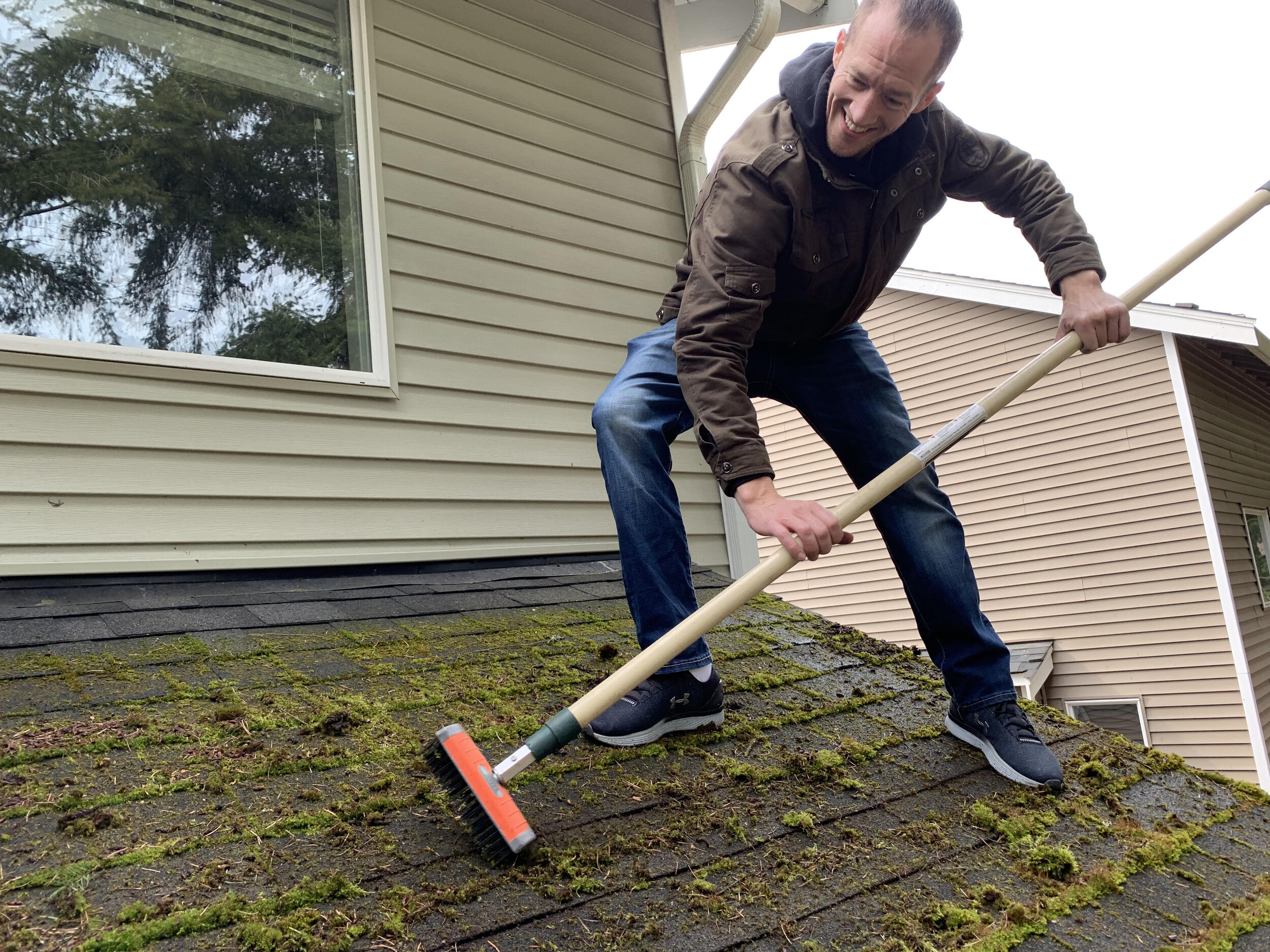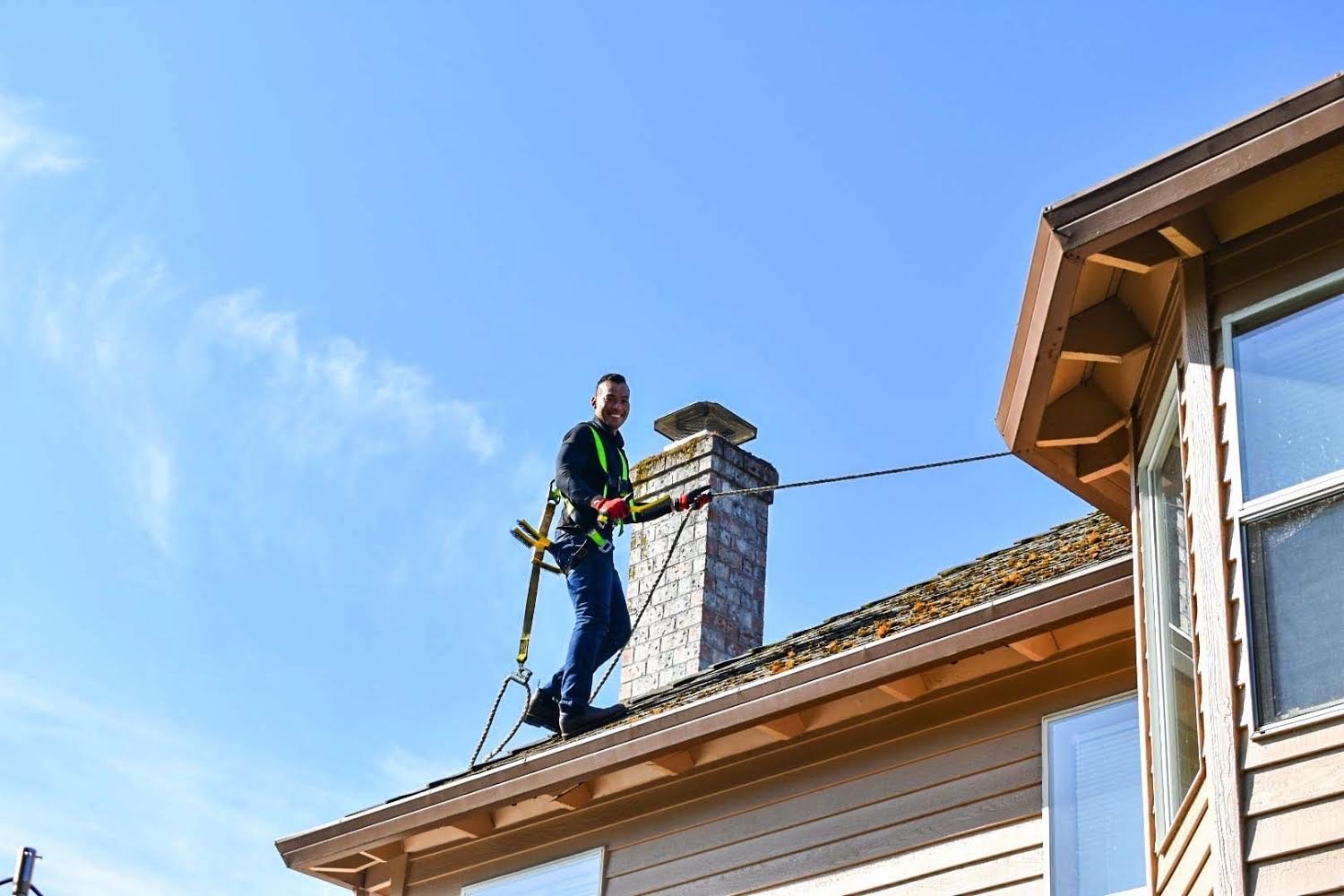Get Specialist Tips on DIY Roof Moss Removal for a Much Healthier Roofing
Preserving the stability of your roof is crucial for the general wellness of your home, and moss growth can pose a substantial threat if left uncontrolled. Effective moss elimination needs even more than just scuffing the surface. It involves understanding the underlying causes of moss expansion, utilizing the right devices, and applying preventative actions.
Comprehending Moss Development
Although typically ignored, understanding the nature of moss development is vital for effective roofing system maintenance and conservation. Moss prospers in damp, shaded settings, making roofing systems with limited sunshine exposure specifically at risk. Its development is promoted by wetness, which is typically maintained on roofing system surfaces due to buildups of natural particles, such as fallen leaves and dust. With time, this dampness produces an optimal environment for moss, which can rapidly spread out throughout the roofing, compromising its integrity.
If left untreated,Moss growth can lead to a host of problems. The presence of moss usually results in the retention of additional wetness, which can speed up the deterioration of roof products. This consistent wetness can create shingles to lift or break, creating access factors for water and causing leakages. The origins of moss can install into the roof material, intensifying the possibility for damages.

Vital Tools and Products

In terms of tools, a long-handled soft-bristle brush is ideal for physically getting rid of moss without jeopardizing the stability of the shingles. A yard sprayer can be useful for applying moss-killing solutions uniformly throughout the influenced locations. When selecting a moss-removal solution, select a biodegradable, non-corrosive formula to secure both the setting and your roof covering materials.
Added materials consist of protective handwear covers and safety goggles to secure versus chemical dashes and debris. Take into consideration tarpaulins or plastic sheeting to cover plants and landscaping listed below the roofing system, preventing any remedy overflow from triggering damage. Lastly, a yard hose pipe with a spray nozzle can be used for rinsing away deposits, ensuring a tidy, moss-free surface. Equipped with these important devices and materials, you are all set to deal with moss elimination successfully see page and safely.

Step-by-Step Elimination Overview
Starting the procedure of roof covering moss elimination calls for careful planning and adherence to a systematic strategy to make certain both effectiveness and safety. Begin by evaluating the roof covering to assess the extent of moss growth and recognize any prospective dangers, such as loose shingles or architectural damages. Guard on your own by wearing suitable look at this site safety and security gear, consisting of non-slip footwear and a harness when essential.
Start the removal procedure by carefully making use of a soft-bristle brush or a specialized moss scrape to detach moss from the roofing system surface area, making sure not to harm shingles. Job from the top to protect against more helping to loosen of shingles. For persistent spots, use an industrial moss elimination solution or a homemade combination of equivalent parts water and vinegar. Enable the option to rest for 20-30 minutes before rinsing it off with a yard tube. Prevent using a pressure washing machine, as this can cause substantial roof covering damage.
Protecting Against Future Moss Growth
A proactive strategy is vital in avoiding future moss growth on your roofing system. By doing so, you raise sunshine direct exposure, which assists maintain the roof covering dry and much less friendly to moss.
In addition to landscape design adjustments, think about applying a commercial moss inhibitor or zinc/copper strips along roof covering ridges. These materials release ions that produce an inhospitable atmosphere for moss, dramatically decreasing its capability to develop. When choosing such products, ensure they work with your roof product to stay clear of damage.
Periodically examine for very early signs of moss, enabling for timely intervention prior to it ends up being problematic. In regions susceptible to moss development, organizing seasonal examinations can be especially helpful.
Roof Covering Maintenance Tips
Maintaining a healthy and long-lasting roof involves even more than just avoiding moss development. Regular roofing system upkeep plays a crucial role in maintaining the architectural honesty and visual charm of your home.
Cleaning your seamless gutters is vital over at this website to prevent water accumulation that can result in roofing damages. Make sure that gutters and downspouts are free from debris, enabling water to stream openly. Additionally, cutting overhanging branches can minimize debris build-up and lower the danger of damages from dropped arm or legs during storms.
Ensure appropriate attic ventilation to stop moisture build-up, which can result in mold and mildew development. Appropriate ventilation help in keeping ideal temperature level and humidity levels, additionally safeguarding the roofing framework.
Conclusion
Effective elimination of roofing system moss is essential for maintaining the architectural honesty and longevity of roofing products. Recognizing the conditions that promote moss growth allows property proprietors to resolve the problem proactively.
Keeping the honesty of your roofing is vital for the total health of your home, and moss development can pose a substantial threat if left unchecked. Begin by checking the roof covering to evaluate the degree of moss growth and determine any kind of prospective threats, such as loosened shingles or architectural damage.Beginning the elimination process by gently utilizing a soft-bristle brush or a specialized moss scrape to remove moss from the roofing system surface area, taking treatment not to harm shingles - roof moss removal.A positive approach is necessary in stopping future moss growth on your roofing system.Keeping a healthy and resilient roof entails even more than simply protecting against moss growth